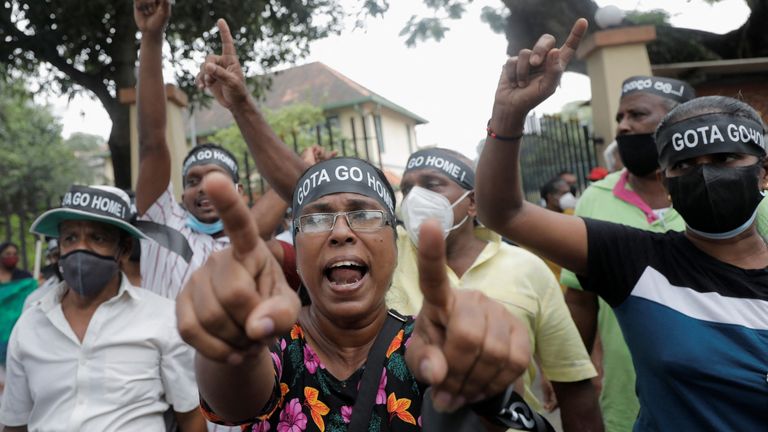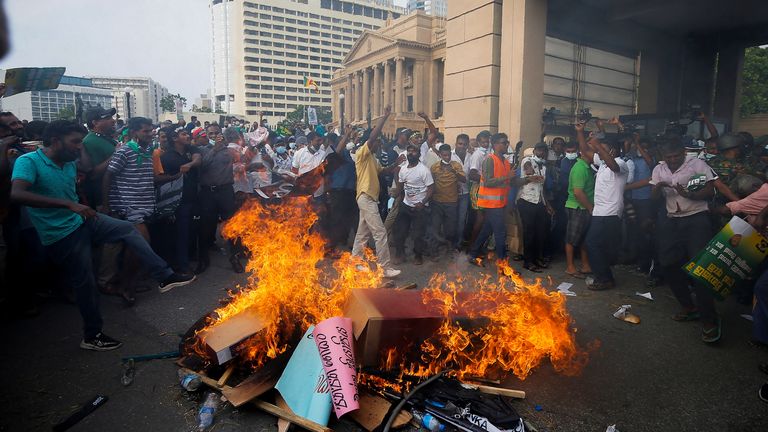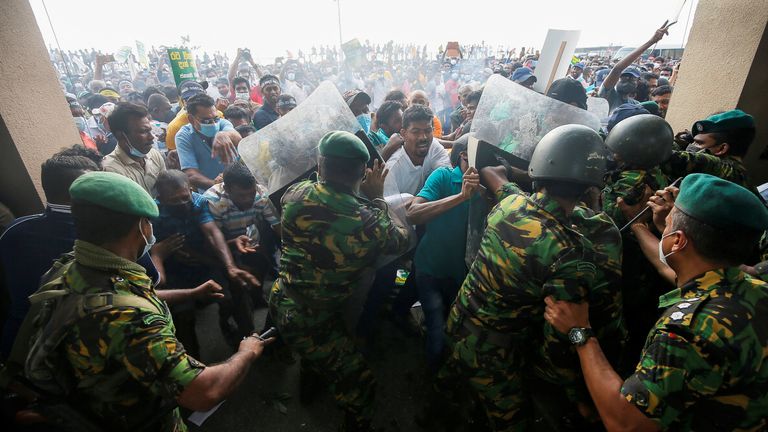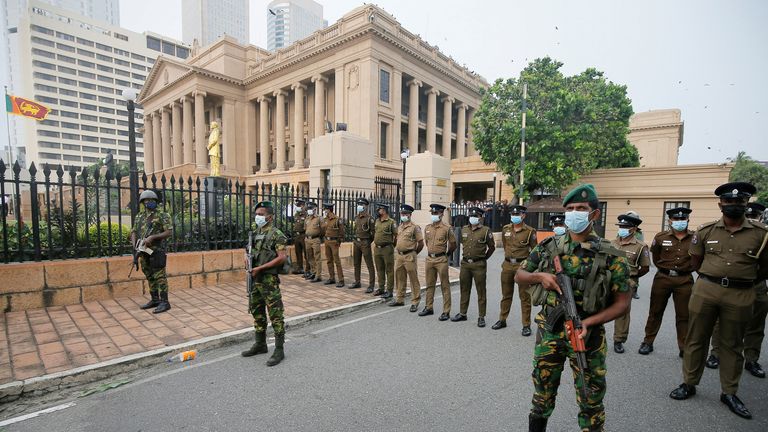Triggering food and fuel shortages and protests
by Neville Lazarus, Sky News, UK, March 29, 2022
In the past three months, fuel prices have increased three times, while essential food items have doubled.
Sri Lanka is facing its worst-ever economic crisis, which has driven up prices and triggered food and fuel shortages across the country.
Since the beginning of March, the Sri Lankan rupee has fallen by almost 45% against the US dollar and its foreign exchange reserves have fallen to crisis levels.
Sri Lanka imports a lot of essential items, but its inability to pay for them has resulted in shortages of food, fuel and baby milk.
While the country relied heavily on borrowing from China, which may have helped in the short term, it is now on the verge of sovereign debt default.
Power cuts used to plug fuel crisis
The economic crisis has sparked protests across the country.
In February, essential food inflation rose by 25% and overall inflation is close to 18%, while people have been forced to queue for hours to buy fuel, amid rocketing prices.
Unable to buy fuel the Ministry of Power announced a six to seven-hour daily power cut across the country, while supplies for buses and lorries have also been rationed.
The war in Ukraine has also caused world oil prices to rise, making it difficult for Sri Lanka to buy.
Why is the crisis happening?
Sri Lanka’s deep-rooted economic crisis has remained unaddressed for decades by successive governments.
Instead of addressing the issue head on it took the easier route in borrowing to tide over problems and now has mounting debt and interest payments of almost $12 billion.
This year, it is due to make $4 billion of such payments, further depleting its reserves.
Tourism generates more than $4 billion a year, but the industry was hit hard by the COVID pandemic.
The Rajapaksa government’s reckless and mismanaged economic policies has exaggerated the crisis and has been blamed for the mess the country is in.
Tax cuts, severe import restrictions and the reluctance to bring in prudent economic reforms laid bare the structural deficiency in the government’s economic policy.
With a severe balance of payment crisis, international agencies downgraded the country, further hampering any chances of foreign investment.
The country is in a ‘debt trap’
Sri Lanka has now asked China to restructure its debt payments and for credit support.
The government has sought a credit line of $1.5 billion from India to import essentials. This amount is in addition to the $1 billion extended by India last month.
The country is set to reach out to the International Monetary Fund (IMF) and other countries for relief.
However the magnitude of the crisis is such that these loans may not be sufficient to get out of the balance of payment problems, as the current deficit is gigantic.
But for the moment, it’s ordinary Sri Lankans who will have to bear the brunt of skyrocketing prices and shortages of essential products for a long time to come.



